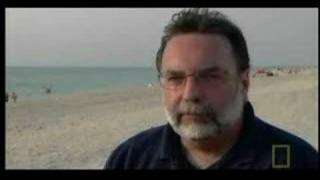The Belgian company Jan De Nul and the Dutch company Van Oord dredged sand from the bottom of the Persian Gulf and constructed artificial peninsulas, which are known as The Palm Islands.
The sand is sprayed by the dredging ships, which are guided by DGPS, onto the required area by a process known as rain-bowing which gets its name because of the arcs in the air when the sand is sprayed. The outer edge of each Palm’s encircling falcate is a large rock-breakwater. The breakwater of the Palm Jumeirah has an astounding over seven million tons of rock. Each rock was placed separately by a crane, signed off by a diver and assigned a GPS coordinate.
Work on Palm Jebel Ali was started in 2002 by The Jan De Nul Group and finished in a short span of 4 years. Palm Jebel Ali’s reclamation project includes the creation of a 4 km long peninsula, protected by a 200 metre wide, 17 km long circular breakwater. 210,000,000 metric cube of rock, sand and limestone were reclaimed and approximately 10,000,000 cubic metres of rocks has been used in the slope protection works.



